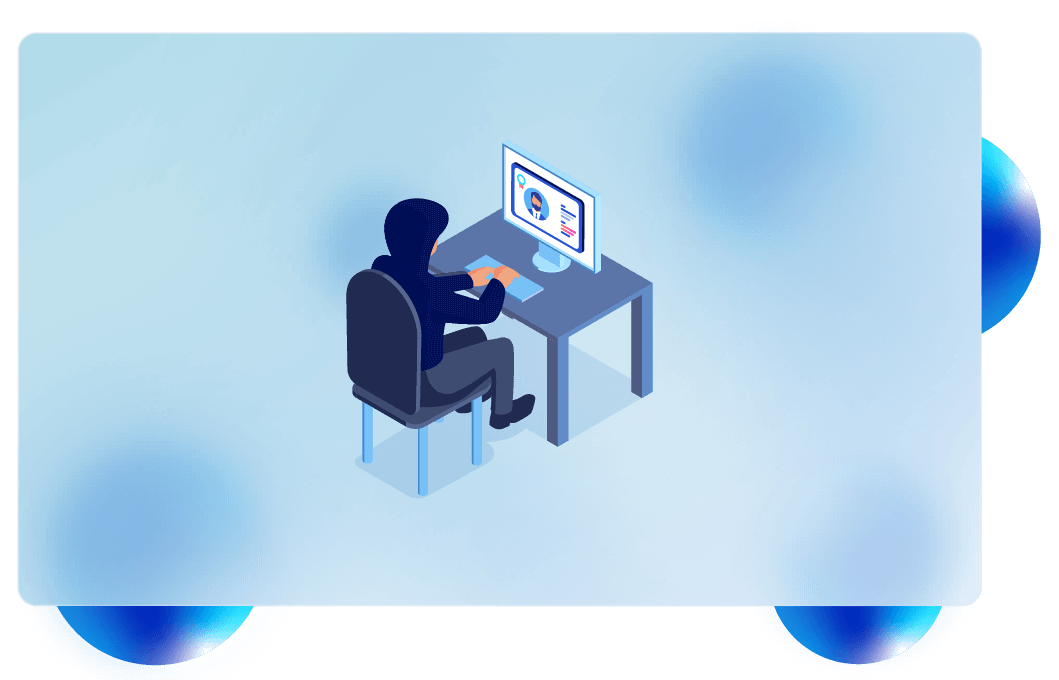In 2023, identity theft and fraud reached significant levels, with various reports highlighting the extensive impact on consumers and businesses. The Federal Trade Commission (FTC) reported that consumers lost more than $10 billion to fraud, marking a 14% increase from the previous year.
Identity theft remained a pervasive issue, with nearly 560,000 cases reported in the first half of 2023 alone. This number put the year on track to exceed 1 million identity theft complaints, a figure higher than any pre-pandemic year on record. The total number of fraud and identity theft cases reported to the FTC was approximately 5.7 million.
Understanding Identity Theft
Have you ever worried about someone stealing your personal information? This crime, known as identity theft, can wreak havoc on your finances and reputation. Thieves target your Social Security number, bank details, and credit card information to commit fraud, like making unauthorized purchases in your name.
How do they get this information? It can be as low-tech as digging through your trash for discarded bank statements. But increasingly, they turn to technology. They might steal computers and scour their hard drives, hack into company databases, or even trick you into giving up your information through fake emails or texts. Social media can also be a goldmine for identity thieves, so be careful what you share online.
The consequences of identity theft can be devastating. A thief using your information can rack up debt, damage your credit score, and make it difficult for you to access loans or even get a job. Don’t let this happen to you! Be proactive and take steps to protect yourself from this growing crime. This blog will cover the most common types of identity theft, the warning signs to watch for, and how to protect yourself.
Types of Identity Thefts
1. Financial identity theft
Financial identity theft is the most common form of identity theft, where the thief uses another person’s personal information, such as credit card details or bank account numbers, to make unauthorized purchases or withdrawals. Victims often discover this type of theft when they notice unusual transactions on their bank statements or receive unexpected bills.
Preventive Measures:
- Regularly monitor your bank and credit card statements for unauthorized transactions.
- Set up account alerts to be notified of any unusual activity.
- Use credit cards with fraud protection features.
- Be cautious when sharing your financial information, especially online.
- Don’t click on links in emails from your bank or credit card company; type the URL directly into your browser.
- Be cautious of calls or messages from unknown people claiming to be from financial institutions or government agencies.
2. Medical Identity Theft
Medical identity theft occurs when someone uses your personal information to obtain medical care, prescription drugs, or medical insurance benefits. This can lead to inaccurate medical records, which can be dangerous if you receive incorrect medical treatment based on false information in your records.
Preventive Measures:
- Review your medical records and insurance statements regularly.
- Notify your healthcare provider of any discrepancies in your medical records.
- Securely dispose of documents containing medical information.
- Be cautious when sharing your health insurance information.
3. Child Identity Theft
Children’s Social Security numbers are particularly vulnerable because they can be used to create new identities that go undetected for years. This can severely impact a child’s future credit and ability to obtain loans, scholarships, and employment.
Preventive Measures:
- Monitor your child’s credit report periodically, especially as they approach adulthood.
- Teach your children about the importance of protecting their personal information.
- Securely store your child’s personal documents.
4. Employment Identity Theft
Employment identity theft happens when someone uses your personal information to get a job. This can result in tax liabilities for income you didn’t earn and complications with your employment history.
Preventive Measures:
- Regularly check your Social Security earnings statement for unfamiliar employers or wages.
- Notify the Social Security Administration of any discrepancies.
- Be cautious when providing your personal information to potential employers.
5. Criminal Identity Theft
Criminal identity theft happens when someone provides law enforcement with another person’s name and personal information during an arrest or investigation. This can result in wrongful criminal records and legal complications for the victim, who may face difficulties clearing their name.
Preventive Measures:
- Periodically check your criminal records through local law enforcement agencies.
- Report any discrepancies to the authorities immediately.
- Use identity verification services to monitor your personal information.
6. Tax Identity Theft
Tax identity theft occurs when thieves use your Social Security number to file a false tax return and claim a refund. Victims often discover this when they attempt to file their taxes and find that a return has already been filed in their name.
Preventive Measures:
- File your tax returns early to reduce the chance of someone filing a fraudulent return in your name.
- Use a secure method to send your tax returns, such as certified mail or e-filing through a secure service.
- Be cautious of phishing scams that seek to obtain your tax information.
7. Synthetic Identity Theft
In synthetic identity theft, thieves combine real and fake information to create a new, synthetic identity. For example, they might use a real Social Security number with a fictitious name and address. This type of theft is challenging to detect because it often does not directly affect the person whose information was used.
Preventive Measures:
- Monitor your credit reports for any new accounts you did not open.
- Use credit monitoring services that can alert you to new credit inquiries.
- Secure your Social Security number and only provide it when absolutely necessary.
8. Account Takeover
Account takeover occurs when a thief gains access to your existing accounts (bank, email, social media) and takes control, often changing passwords and locking you out. This can lead to financial loss, reputation damage, and loss of personal data.
Preventive Measures:
- Use strong, unique passwords for each of your accounts and change them regularly.
- Enable two-factor authentication on your accounts.
- Monitor your accounts for any suspicious activity.
9. Social Security Identity Theft
Social Security identity theft involves someone using your Social Security number for various fraudulent activities, including opening accounts, obtaining credit, or other benefits. This type of theft can lead to a complex and lengthy process to restore your identity and fix the associated issues.
Preventive Measures:
- Monitor your Social Security account regularly.
- Report any unauthorized use of your Social Security number to the Social Security Administration.
- Secure your Social Security card and avoid carrying it with you unless necessary.
10. Benefits Identity Theft
Benefits identity theft involves someone using your personal information to apply for government benefits such as unemployment, Social Security, or food stamps. This can lead to wrongful denial of benefits and legal troubles.
Preventive Measures:
- Monitor your benefit statements and accounts regularly.
- Report any discrepancies or unauthorized benefits to the relevant authorities.
- Secure your personal documents and information.
Warning Signs of Identity Theft
- Unfamiliar Charges or Withdrawals: Unexpected transactions on your bank or credit card statements, or unauthorized withdrawals from your accounts.
- Unexpected Bills or Collection Notices: Receiving bills for services or products you didn’t purchase, or notices from debt collectors about debts you don’t recognize.
- Missing Mail: Important mail, such as bills or financial statements, not arriving as expected, or an unusual increase in junk mail from unfamiliar sources.
- Credit Report Discrepancies: Accounts you didn’t open appearing on your credit report, or sudden changes in your credit score.
- Denied Credit or Loans: Being denied credit or loans despite having a good credit history, or receiving unexpectedly higher interest rates.
- Tax Return Issues: Being informed by the IRS that more than one tax return was filed in your name, or receiving notices about income from an employer you don’t work for.
- Unfamiliar Medical Bills: Bills for medical services you didn’t receive, or notices from your health insurance about benefits you didn’t use.
- Account Takeover Alerts: Notifications of password changes or login attempts you didn’t initiate, or being locked out of your accounts and receiving security alerts.
- Suspicious Communication: Receiving calls or emails about accounts you didn’t open, or emails and messages from unfamiliar sources requesting personal information.
- Legal Notices or Warrants: Receiving warrants or court summons for crimes you didn’t commit, or notices about legal actions against you for activities you didn’t engage in.
Guarding Your Customers: A Toolbox for Preventing Identity Theft
Implementing Strong Cybersecurity Measures
Businesses should prioritize strong cybersecurity measures such as encryption to protect sensitive data both in transit and at rest, ensuring that even intercepted data remains unreadable. Employing robust firewalls and regularly updating antivirus software can defend against malicious attacks. Two-factor authentication (2FA) adds an extra layer of security beyond just passwords, requiring an additional verification step for accessing sensitive systems and information.
Regular Security Audits and Penetration Testing
Conducting regular security audits helps identify vulnerabilities and ensure compliance with security policies. Penetration testing is also critical, as it uncovers and addresses security gaps that could be exploited by attackers. These proactive assessments help maintain a strong security posture and mitigate risks
Investing in Fraud Detection Software: Consider robust fraud detection software as a critical line of defense. These programs act like vigilant guards, constantly monitoring for suspicious activity and preventing various forms of identity theft. Many financial institutions and businesses already utilize this technology to ensure their data security meets the highest standards.
Verifying Documentation: Don’t be deceived by forged documents! Document verification services meticulously examine the authenticity of documents like credit reports, bank statements, and employment records. This ensures you’re dealing with legitimate individuals and helps prevent fraudulent activity.
Implementing Biometric Authentication: Enhance security with biometric verification. This technology goes beyond passwords by using unique physical characteristics, such as fingerprints or facial recognition, to confirm a person’s identity. This adds a powerful layer of security, deterring physical theft, protecting personal documents, and preventing identity theft attempts that rely on stolen mail or physical access.
Utilizing Liveness Checks with Face Authentication: Eliminate the risk of stolen selfies! Liveness detection technology verifies that a real person is present during identity verification, not just a photo. This advanced security measure effectively prevents identity theft attempts through impersonation.
Summary
Identity theft has become a pervasive threat in today’s digital age. From stolen credit card numbers to hijacked social media accounts, the consequences for victims can be devastating. This blog has equipped you with the knowledge to identify the different types of identity theft, recognize the warning signs, and take proactive steps to safeguard yourself. Businesses, too, have a crucial role to play. Remember, prevention is key. By following the steps outlined in this blog, both individuals and businesses can significantly reduce the risk of falling victim to this crime.
Discover how IDcentral can help prevent Identity Theft!Book a Free Demo

Mohini Sahu is a Digital & Content Marketing Executive at IDcentral (A Subex Company). She specializes in crafting engaging content on KYC and Onboarding Technology. With a thorough understanding of diverse industries, she creates insightful content on emerging trends and best practices.
